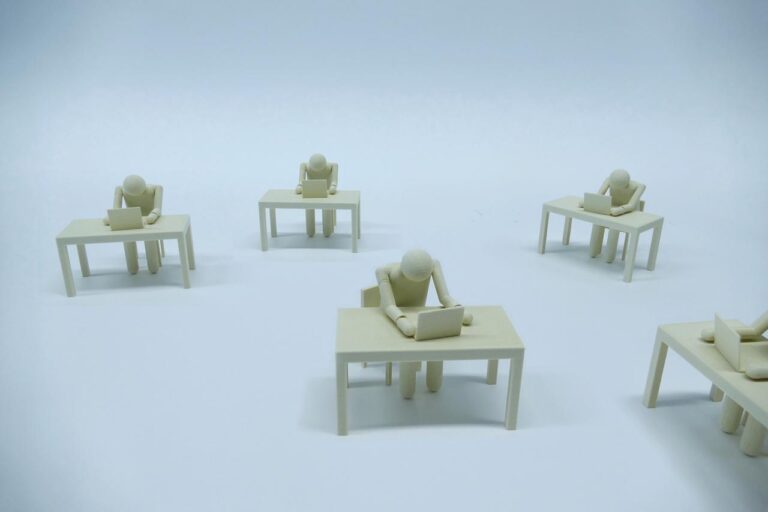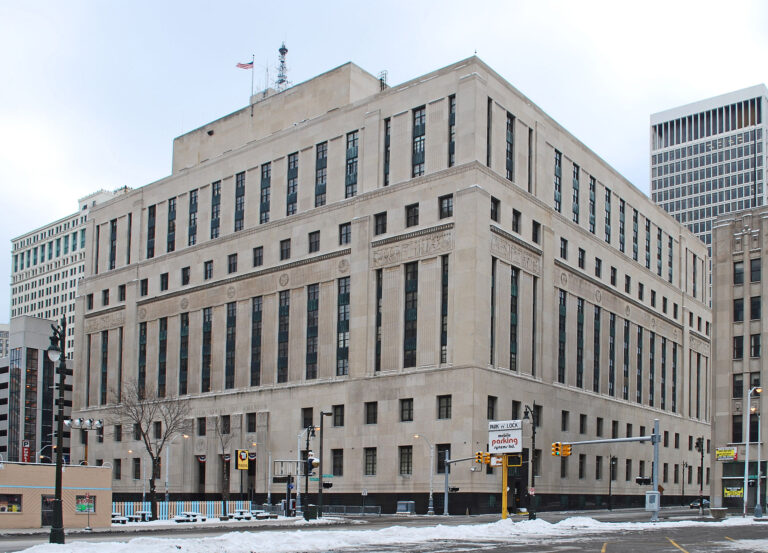In what ESPN calls a potentially “game-changing” moment for college athletics, the regional director of the National Labor Relations Board in Chicago has ruled that college football players who receive scholarships are “employees” within the meaning of the National Labor Relations Act and are therefore entitled to unionize. The decision will likely be appealed to the full Board in Washington D.C., and from there appealed to a federal appellate court. If sustained, the decision could transform not only college sports but also labor law more generally.
Some background: last January, the football players at Northwestern University attempted to unionize with the newly formed College Athletes Players Association. Following federal law, the students petitioned the National Labor Relations Board to recognize CAPA as their union. The NLRB operates under the National Labor Relations Act of 1935, which states that “Employees shall have the right to self-organization [and] to form, join, or assist labor organizations.” This protection, though broad, only gives “employees” the right to form a union. The Supreme Court and NLRB have interpreted “employee” to mean “a person who performs services for another under a contract of hire, subject to the other’s control or right of control, and in return for payment.” So before the NLRB could recognize CAPA as the football players’ union, it first had to ask whether the players were “employees” under this definition.
In similar cases, the NLRB has not answered this question consistently. In 2000, for example, a group of graduate students from New York University argued they were “employees” entitled to form a union because they worked as teaching and research assistants under professors’ control in return for payment. In a decision called NYU, the NLRB agreed, finding that the students were basically part-time employees, even if the assistant work they performed was part of earning their degrees. Four years later, however, in a case called Brown University, the NLRB reversed its earlier decision, emphasizing that the purpose behind the 1935 Act was to reduce industrial strife in “economic relationships,” not “primarily educational” ones. The NLRB emphasized that graduate teaching assistants are “primarily students,” not “employees,” because they (1) are mainly focused on obtaining degrees, (2) work only if they stay enrolled as students, and (3) receive the same money for working as they received through financial aid.
Although Brown covered graduate students, the same principle applies to college athletics. As Rebecca Livengood wrote in a guest post last month and Benjamin Sachs wrote in January, once the Northwestern players petitioned the NLRB, the legal question became whether the football players were primarily student athletes or student athletes. In hearings before the regional director of the NLRB in Chicago, senior quarterback Kain Colter and others emphasized the economic relationship between the students and the university, maintaining that the four-year scholarships they received for playing football was payment, as the scholarships could be cancelled for a variety of reasons, including voluntarily withdrawing from the team. Colter also testified that he had been admitted to the university due to his football skills, not his “decent” academic record; his coaches discouraged him from taking a chemistry class required for his pre-med major because it conflicted with morning football practices; and no player on a scholarship was allowed to miss practice to attend class. Northwestern administrators disputed Colter’s claims and responded with evidence of an educational relationship: the Student-Athlete Handbook, for example, states that players’ academics must take precedence over athletics, so the university provided the players with study tables, classroom accommodations, and minimum-GPA and classroom-attendance requirements. Northwestern also cited NCAA rules that prohibit students from receiving compensation for playing football, noting that “walk-on” or non-scholarship players play only for “the love of the game.”
Regional Director Peter Sung Ohr found that, under Brown University, the Northwestern players who received scholarships are “employees” within the meaning of the Act because their relationship to the university was economic, not primarily educational. Citing Brown University‘s definition of an “employee,” Ohr wrote that “it is clear that the scholarships the players receive is compensation for the athletic services they perform for [Northwestern] throughout the calendar year, but especially during the regular season and postseason.” Ohr emphasized that the monetary value of the scholarships — which cover tuition, books, room, and board — total as much as $76,000 per year, or a quarter-million dollars over four or five years. Each player under scholarship must sign a “tender” that, like a contract, specifies the duration and conditions under which they receive the scholarship.
Moreover, Ohr found that all the players were “under strict and exacting control” of their coaches “to such a degree that it does impact their academic pursuits.” Northwestern’s coaches imposed daily itineraries, travel requirements, and living restrictions on the students to which nonathletes were not subject, requiring football players to spend anywhere from 40 to 50 hours per week on football-related activities and only 20 hours per week on schoolwork. In contrast with NYU or Brown University, where the graduate students’ work was primarily educational and the work they performed was a core element of their degree requirements, the services the football players performed were primarily athletic, as they received no academic credit for playing football. Despite Northwestern’s efforts to assist players with academics, Ohr found that, ironically, the special assistance highlighted “how pervasively the players’ lives are controlled” as well as “the extraordinary time demands placed on the players by their athletic duties.” In short, the relationship between the students and university was “an economic one that involves the transfer of great sums of money to the players in the form of scholarships.”
Notably, Ohr agreed with Northwestern that this holding was limited to the 85 football players who received scholarships. Despite the $235 million in revenue Northwestern’s entire football team earned between 2003 and 2012, Ohr found that Northwestern’s 27 walk-on players were not “employees” because they did not receive compensation for the services they performed, nor were they subject to the same degree of control as scholarship players. Ohr held that the walk-ons’ aspirations of earning a scholarship or the time they spent practicing and playing alongside the scholarship players was insufficient to meet the definition of “compensation.” In addition, Ohr further excluded incoming freshmen (who had not performed services) and players whose playing eligibility was exhausted at the conclusion of the 2013 regular football season (who no longer receive “compensation”) from the relevant bargaining unit to ensure that nonemployees would not be covered. In sum, Ohr concluded that the players who continue to receive scholarships for their services are employees entitled to unionize with CAPA.
In her post last month, Rebecca Livengood thoughtfully predicted several implications of Ohr’s decision in favor of the Northwestern students. First, if the decision stands and football players who receive scholarships are able to unionize, they will be able to collectively bargain for stated goals of “improved concussion and medical protection, guaranteed scholarships and additional money to cover college attendance expenses.” Second, unionization could quickly lead student-athletes to demand financial compensation in addition to scholarships — a debate that seems to resurface every time an NCAA coach receives a multimillion-dollar salary from an athletic program’s enormous revenue or a video game manufacturer uses players’ likenesses without compensation in its football games. Finally, student athletes would be able to bargain regarding many of the restrictions the NCAA and college athletic programs impose as conditions for playing sports, which could impact not only revenue-generating athletic programs like large football and basketball programs but also the majority of student athletes whose programs operate at a loss.
It is also worth noting the limits of Ohr’s decision. First, the decision could be reversed by the full NLRB in Washington, a federal appellate court in Chicago, or the Supreme Court afterward. Second, even if the decision stands, as Benjamin Sachs noted in his post, Ohr’s decision only affects athletes at private universities, as state labor law governs employees of state universities. Third, Ohr explicitly limited his decision to student athletes who receive compensation in the form of scholarships — the football team’s 27 walk-on students, not to mention the thousands of students who play sports without scholarships, remain ineligible to unionize on the basis of revenue they earn for their colleges. Ohr’s ruling would exclude, for example, members of Harvard University’s men’s basketball team — despite their earning $1,225,999 in revenue in 2012 and winning games in two NCAA tournaments since then — who receive “likely letters” and financial aid packages before admission instead of discretionary scholarships afterward.
Although athletes without scholarships would likely receive many of the same benefits unionized athletes receive as a result of their collective bargaining, it is not difficult to imagine the interests of athletes with scholarships occasionally diverging from those without — especially in terms of compensation or licensing agreements. Moreover, in schools that offer fewer than the NCAA-maximum 85 scholarships for a football team, scholarship athletes could represent the minority of players on a team, with proportionately little bargaining power.
Despite the tension inherent in tethering the right to unionize to the receipt of compensation in a realm governed by “amateurism,” Ohr’s ruling represents the start of a new quarter in college athletics. The final outcome could change the business models not only for college athletic programs, but college academic programs as well, as the Obama-nominated NLRB could use the case to reverse the Bush-era’s Brown University decision regarding graduate students and return to the Clinton-era NYU standard — a reversal it has already suggested it plans to make. In a world in which graduate students and college athletes can both unionize, student unions could proliferate across campuses, bringing intense pressure on universities to rethink established practices.






Daily News & Commentary
Start your day with our roundup of the latest labor developments. See all
December 13
In today’s News & Commentary, the Senate cleared the way for the GOP to take control of the NLRB next year, and the NLRB classifies “Love is Blind” TV contestants as employees. The Senate halted President Biden’s renomination of National Labor Relations Board Chair Lauren McFerran on Wednesday. McFerran’s nomination failed 49-50, with independents Joe […]
December 11
In today’s News and Commentary, Biden’s NLRB pick heads to Senate vote, DOL settles a farmworker lawsuit, and a federal judge blocks Albertsons-Kroger merger. Democrats have moved to expedite re-confirmation proceedings for NLRB Chair Lauren McFerran, which would grant her another five years on the Board. If the Democrats succeed in finding 50 Senate votes […]
December 10
In today’s News and Commentary, advocacy groups lay out demands for Lori Chavez-DeRemer at DOL, a German union leader calls for ending the country’s debt brake, Teamsters give Amazon a deadline to agree to bargaining dates, and graduates of coding bootcamps face a labor market reshaped by the rise of AI. Worker advocacy groups have […]
December 9
Teamsters file charges against Costco; a sanitation contractor is fined child labor law violations, and workers give VW an ultimatum ahead of the latest negotiation attempts
December 8
Massachusetts rideshare drivers prepare to unionize; Starbucks and Nestlé supply chains use child labor, report says.
December 6
In today’s news and commentary, DOL attempts to abolish subminimum wage for workers with disabilities, AFGE reaches remote work agreement with SSA, and George Washington University resident doctors vote to strike. This week, the Department of Labor proposed a rule to abolish the Fair Labor Standards Act’s Section 14(c) program, which allows employers to pay […]